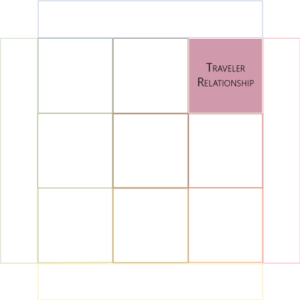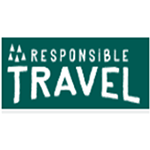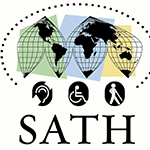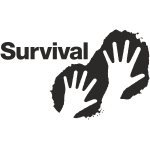
Harness the Magic of Personalization and Advanced Technology to Create Unforgettable Experiences, Ignite Loyalty, and Soar to New Heights of Success

Traveler Relationships
18 Questions to foster unforgettable connections
Key to Success
- Building and maintaining relationships with travelers include creating personalized experiences, providing exceptional traveler service, and communicating effectively with travelers to build trust, loyalty, and advocacy.
- Using technology, such as traveler relationship management (CRM) systems, social media, and mobile apps, gathers data, personalizes experiences, and communicates in real-time.
- The impact of traveler relationships on business performance includes increased traveler retention, higher levels of traveler satisfaction and loyalty, and improved financial performance.
Accomplishments
- Clarify the type of relationship it wants to establish with each traveler segment.
- Identify which traveler segments we will target for a long-term relationship strategy. And which traveler segments we will target for a short-term relationship strategy.
- Highlight our traveler’s needs and expectations.
Time-Saving Tools
- The tourism destination market plan and strategic plan.
- Tourism road maps offered by the tourism destination
- Tourism destination demand research.
- An analysis of the traveler demand profile.
- Research about the traveler’s needs.
- Information about the potential distributors and local sellers.
- Information about the channels our competitors are using.
- Historical performance of our current channels.
- All documents could be applied to find relevant information.
Presentation
Traveler relationships are interactions between our business, current travelers, and potential and former travelers. This includes personal interactions, communications, user interactions with products and services, and environments. We need to understand our traveler’s needs, wants, and expectations and provide exceptional service and experiences that exceed their expectations.
Here are some key points to keep in mind about traveler relationships:
- Listen to our travelers: Actively listen to them and seek feedback on their experiences with our business. This will help us identify areas to improve and provide better traveler service.
- Personalize our interactions: Treat each traveler individually and personalize our interactions with them. We are addressing them by name, remembering their preferences, and tailoring our recommendations and offerings to their interests.
- Build trust: Trust is the foundation of any strong relationship, so it’s essential to be honest, transparent, and reliable in our interactions with travelers.
- Focus on the overall traveler experience: Make sure that every aspect of our business, from the booking process, is designed to provide our travelers with a seamless and enjoyable experience.
- Stay in touch: Keep in touch include sending them personalized offers and promotions, sharing news and updates about our business, and inviting them to provide feedback and reviews.
Some traveler relationship types are Transactional – Long-term – Personal assistance – Dedicated personal assistance – Self-service – Automated services – Communities – Co-creation – Switching costs – Collective.
In conclusion, by focusing on these critical areas, Small and Medium-sized Tourism Enterprises (SMTEs) can build solid and lasting relationships with our travelers and create a loyal traveler base to help us grow and succeed.
GUIDING QUESTIONS
How can we promote responsible and sustainable practices throughout our traveler relationships? Implementing eco-friendly initiatives and supporting local communities will contribute to small tourism enterprises' long-term success and reputation within our relationships.
YScala
A suggestion of guiding questions that are not intended to exhaust the topic:
- Is our proposal for interaction with the traveler transactional or relationship-based (our business model suggests a substantial, long-term, transactional, short-term, or hybrid relationship strategy)?
- How can we gather and analyze customer feedback to continually improve our customer experience offer? Feedback mechanisms like surveys and reviews will help identify improvement areas and inform future decision-making.
- What steps can we take to ensure that every interaction with a traveler is personalized?
- What steps can we take to ensure that travelers have a positive and seamless experience from the moment we book to the moment we depart?
- How can we create a sense of trust and transparency with travelers so that we feel confident in booking with my business?
- How can we proactively anticipate the needs of travelers and provide them with relevant information and recommendations?
- What tools and technologies can we use to streamline the booking process and make it as easy and convenient as possible for travelers?
- How can we create a sense of community among travelers who have booked with my business and foster a sense of loyalty and advocacy?
- Who and how influences our travelers (influencers, opinion leaders, stakeholders, users)? How can we better know our travelers?
- What type of relationship creates the most value for our travelers?
- How do our travelers want to be found and served?
- What relationships do our competitors have with their travelers? Is that the same relationship we have with our travelers? Is that the best type of relationship to have?
- How could we change our relationship with our travelers?
- What can we do to go above and beyond to create exceptional experiences for travelers and exceed their expectations?
- How can we tailor our services to meet individual travelers’ unique needs and preferences?
- What kinds of relationships do our travelers expect, and how do we maintain them?
- Do different departments address the same traveler segments differently?
- How do we keep them engaged and loyal to our brand?
Small and Medium-sized Tourism Enterprises (SMTEs) can build strong awareness about traveler relationships by asking these questions and working through the answers to know what, how, and where the travelers want to be reached.
Offering more information
Besides the 18 guiding questions we’ve provided to help us evaluate and improve our Traveler Relationship, we’ve compiled a list of valuable resources to further our knowledge and understanding of Traveler Relationship. Notably, these resources offer insights into best practices, sustainability, marketing, and more, catering to the needs of tourism professionals and stakeholders. Consequently, by exploring these links, you’ll be better equipped to make informed decisions and create a thriving, competitive, and sustainable destination for travelers from around the world.
- Personalizing the travel relationship | PhocusWire – The article referenced is about personalizing relationships in the travel industry. Discuss the importance of understanding customer needs and preferences to provide personalized services and experiences, which can increase customer satisfaction, loyalty, and, ultimately, business success.
- CRM Software And Which Is Best For You | Tourism Tiger – The article referenced is about different CRM software options, compare their features, pricing, and suitability for different types of businesses, to help readers make an informed decision about the best CRM software for their specific needs.
- 7 Successful Innovative Social Media Campaigns from the RockStars | DrumUp Blog – The article referenced delves into the strategies behind these campaigns, how they leveraged social media platforms, and why they were successful. The article concludes with lessons or insights readers can apply to social media marketing efforts.
As you conclude reading this orientation post, we’d like to invite you to explore the other insightful articles in our Business Tailor 4 Sustainable Tourism Develop Management Tool (BT4-STDM) blog. We invite you to engage with our community, share your perspectives, and contribute to this meaningful conversation by commenting below. Your experiences and ideas can help others in their sustainable tourism development management journey.
Table of Contents
Let your like and recommend this post to improve your audience!
Share this post with friends, colleagues, or anyone else who might be interested.
Comments:
We invite you to engage with our community, share your perspectives, and contribute to this meaningful conversation by commenting below. Your experiences and ideas can help others in their sustainable tourism development management journey.












